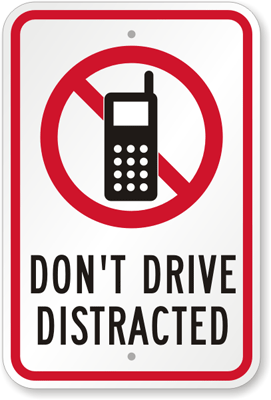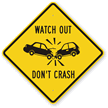Distracted driving upgrades for new cars
Zipping around in his flashy aerocar, George Jetson himself couldn’t have predicted today’s latest update in car innovation. Cars of the future are about to get a major safety upgrade. In an effort to combat the potentially fatal effects of distracted driving – it takes just two seconds of distractions to significantly up your risk of an accident – the government has asked the auto industry to begin outfitting cars with devices that necessitate only two second-long glances – not an extended gaze – to operate.

Voluntary standards adopted by the auto industry will aim to reduce onboard distractions like radios to two seconds or less. By mariomurrent.
Distracted driving kills. The National Highway Traffic Safety Administration and U.S. Department of Transit report that in 2011, 3,331 people were killed in crashes involving a distracted driver, up from 3,267 in 2010. Plus, 387,000 people were injured in motor vehicle crashes involving a distracted driver in 2011, up from 416,000 injured the prior year.
The newly introduced guidelines state that drivers should be able to use a car’s built-in electronics without shifting their eyes from the road for longer than two seconds at a time – 12 seconds in total. It refers only to in-car devices, such as GPS and navigation equipment, hands-free phones, movie players and other tech products that are installed in new cars. Voice-activated rather than manual systems were also recommended.

Auto designers are realizing that although they’re a culprit in many accidents, cell phones aren’t the only things that pull drivers’ eyes from the road. From roadtrafficsigns.com.
The government’s new guide was based on the Alliance of Automobile Manufacturers’ guidelines. As the Alliance said in a statement: “NHTSA and automakers share the same goal: drivers need to keep their eyes on the road, hands on the wheel and connect their mobile phones to the built-in car systems. Portable phones and navigation devices are everywhere, and consumers are using these devices in their vehicles. We need all the stakeholders engaged and working together to find a way to keep our society connected as safely as possible. Pairing mobile phones with our built-in systems designed for driving is a top priority.”
Yet the guidelines do not incorporate handheld cell phone use, which has been decried by advocacy and government groups alike. The DOT has already stated that texting and browsing the web should be off-limits because of the inherent dangers. (Texting shifts a driver’s eyes from the road for an average of 4.6 seconds, according to a DOT study, which elaborates “This is equivalent to the truck traveling, essentially ‘blind,’ the length of a football field.”)
The Alliance cautioned against distractions other than a car’s built-in features, which cause the large majority of accidents. “Our concern is that limiting built-in systems without simultaneously addressing portable devices could result in drivers choosing not to connect their phones in order to access the functionality they want.”

Distracted driving claims thousands of lives annually – and it’s preventable. From marlonolram.
The DOT recommends the changes be incorporated over the next three years for cars, trucks and buses weighing up to 10,000 pounds. The guidelines are voluntary, and automakers that do not meet the standards will not be penalized.
Yet fear of potential distracted driving lawsuits may become a driving force for safety. As USA Today reported, automakers may choose to adhere to the recommendations to avoid potential liability issues, such as crashes related to the use of GPS systems that do not meet the guidelines.
Category: Automotive, News & New Products, Road safety

















